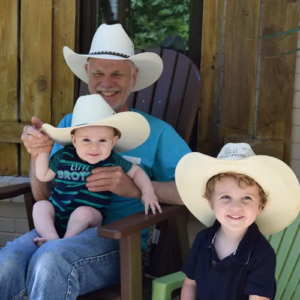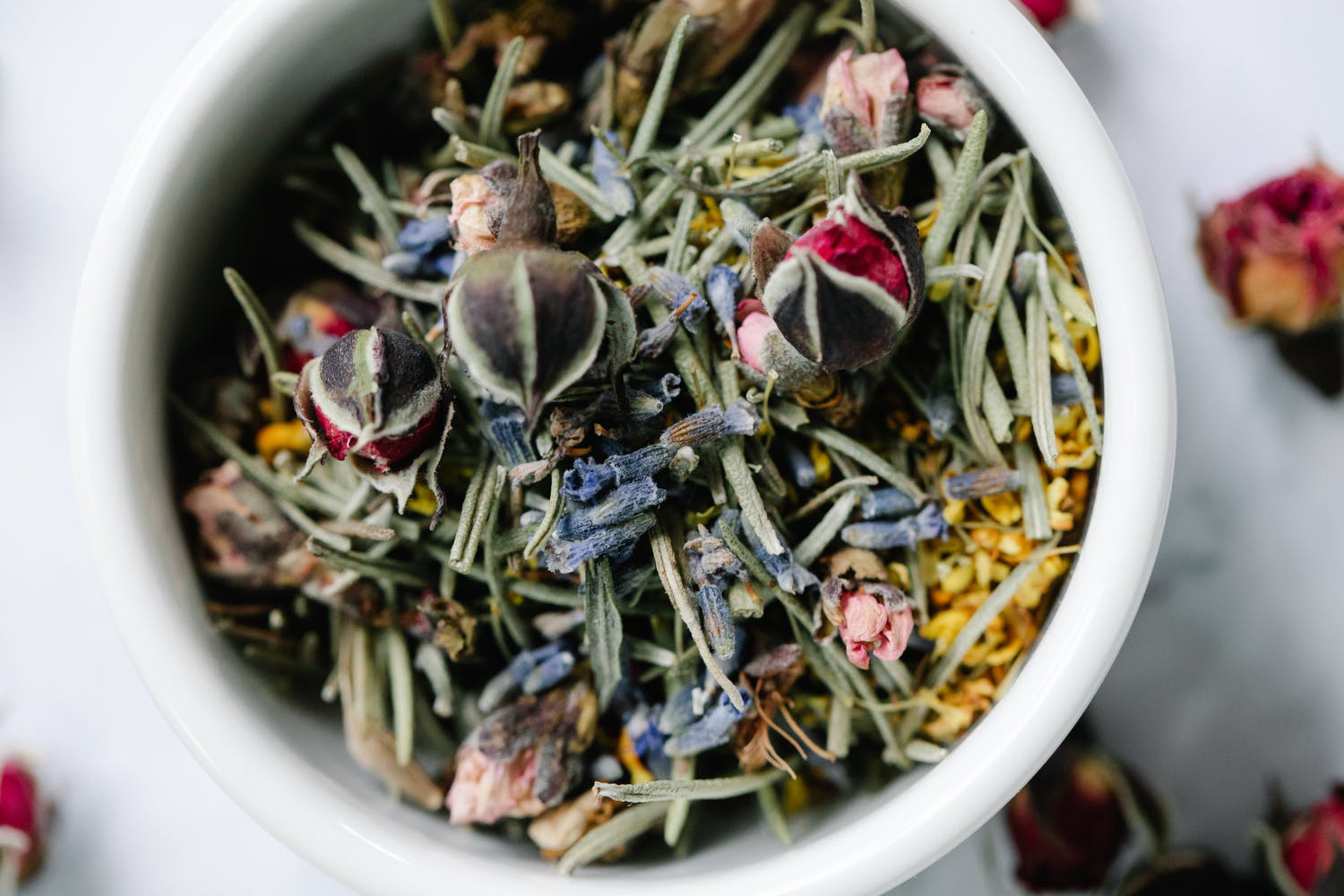In Memoriam: Honoring Dr. Jim Brent’s Multifaceted Approach to Cannabis
Editor’s Note: I had the honor of working with Dr. James Brent, who was one of the SCC’s most loyal and engaged members. He was an active contributor to the News section of the website. He was one of the most passionate herbal medicine advocates I have encountered. He had an innovative approach to cannabis that I found incredibly refreshing. He and I both felt that cannabis was a special plant among a wide variety of other botanicals available to guide us on our healing path. He spoke often of “Vibrational Medicine” which is the power of plant energetics and spirituality and how that influenced healing. He believed that certain plants had a vibration and their essence was part of being in alignment with a given person and their particular condition or situation.

Dr. Brent was a retired dentist and an avid herbalist, which framed most of his perspective for the articles he wrote. Before Dr. Brent’s pieces were published on the SCC, I would work with him to make edits and suggestions. He was always so willing to dig further into the research and used it as an opportunity to learn and grow. Despite my own awareness and acceptance of the more “woo woo” aspects of plant medicine, I may have done some of us a disservice by not pushing this edge more. Jim’s passing helped me to realize that we do have an innate fundamental connection to plants and their own unique communication. This is part of how they enable us to heal. Science will forever fall short and may potentially never be able to elucidate on the true healing capacity of plant medicine. That isn’t to say that we shouldn’t try to find more research and scientific discoveries to benefit our health. But this discovery should not discount the vibrational, spiritual, and energetic aspects of the botanical world and natural healing.
As such, I have outlined below some of his unpublished works which I feel are insightful to the community. I will forever appreciate his quest for knowledge and his unwavering passion. I was told that Jim often went on walks with his young grandchildren and taught them to connect with the medicinal plants surrounding them. May his influence continue to be a blessing and a guide.
Thanks to Jim and all the plant whisperers of the world. ~Sarah Russo, SCC’s Creative Director
Dr. Brent’s Words of Wisdom:
“Cannabis is a great herb. I wish cannabis doctors would not be so focused on just one. That may be wishful thinking on my part although a lot of herbalists got started on that one herb.”
“I just read Matt Cascio’s writing on compassion fatigue. He mentioned two strategies that I believe are a high priority for all chronic illnesses. 1) A change of perception or mindset should be at the top of the list for every intervention. 2) A community of support will make achieving any change less difficult. Added support through improved nutrition, enjoyable physical activity/exercise, mental relaxation to improve parasympathetic tone and possibly use of plant medicine will also be helpful. This is something that I wanted to convey in my blog, as well as that all plant medicine is not created equal and not just the sum of measurable components.”
“I read on the Society of Cannabis Clinicians’ website: ‘Consider cannabis as a drug with some psychoactive properties rather than as an intoxicant with some therapeutic properties.’ I prefer to consider cannabis as a medicinal adaptogenic and tonic herb. The phytochemicals in plants serve purposes for the botanical which we also can use for our purposes. Plants produce these chemicals to improve their chances for survival and reproduction. A plant’s quantity and quality of these phytochemicals (secondary metabolites) are affected by the nourishment it receives from light, water, growing medium and perhaps the intention of the growers.”
“I am involved in a herbal course that relates herbs, their actions, and energetics to the organ systems in order to find a match for the person with an herb that may be helpful. I have been told this more than once: find a few plants to get to know well. These plants can be allies and used with the intention to achieve results which may differ from herbalist to herbalist. Put more simply, energy follows intention. The ultimate goal of a health practitioner is to get energy moving. Life requires motion. Discussing these concepts could be helpful in opening practitioners’ minds to Cannabis as a useful plant rather than just cannabinoids, terpenes, and flavonoids that can be precisely dosed in combination or separately. Knowledgeable herbalists tend to place a higher value on tradition and personal experience while using research to support their knowledge and gain credence from the medical community.”
“My goal is to offer a view of health and healing based on my learning and personal experience that will stimulate interest, contemplation, and further research of literature, tradition, and the experience of other healthcare providers. My educational experience includes herbal studies, naturopathic, osteopathic, subtle energy techniques, and UVM medical cannabis certificate program and TMCI Global courses. I believe we learn not only from our own experience but also the experience of others. I also believe that there should be a return to the concept of medicine men. Medicine can be defined as an experience that supports health, well being, and promotes healing. This could be laughter, companionship, changes in sleep, diet and exercise habits, chemical supplements, and surgical repair of tissue that cannot be healed. This may also include considering a patient’s mindset regarding their spiritual health and sense of purpose. The medicine used needs to be prescribed to treat the person and not the disease.”
“I just heard an herbal lecture on plant communication. It was a beautiful piece of work. I came up with the analogy of Strother Martin’s line in Cool Hand Luke as it relates to the ECS, human and planetary health, ‘What we have here is a failure to communicate.’ Perhaps we humans need to listen to the gifts of our Mother Earth and less on science which is more easily corrupted by less than helpful intention. At least Cannabis can be a plant ally to open hearts and minds, as well as heal, feed, clothe and shelter us.”
“I believe that the sun provides the broadest spectrum of photons. This may provide the same benefit for plants when humans eat a wide variety of natural foods including many colors. Nutrient dense soil and many varieties of organisms may be compared to our own digestive tract and its microbiome. Even some insects and arachnids are controlling damaging pests. If it is true that the greatest differences in cannabis varieties are not in cannabinoid ratios but other phytochemicals such as terpenes and flavonoids. There will be some variation based on the type and content of the soil. All these should be considered when using cannabis as medicine. Quality is more important than quantity. An herbalist develops a relationship with the plant whether wild crafting or cultivating. This would include providing spiritual as well physical nutrition. Intention will direct the effect from seed to patient.”
Cannabis and Echinacea purpurea
It may be helpful to consider Cannabis extracts as an addition to other infection treatment protocols for the present health care crisis. There are references to support the belief of a synergistic effect with Echinacea purpurea which can modulate the endocannabinoid system by targeting CB2 receptors.
Certain Echinacea preparations have anxiolytic action. Anxiety can negatively affect treatment outcomes. The anti-inflammatory effects of Echinacea are the result of stimulating the production of the anti- inflammatory cytokine IL-10 and the inhibition of the proinflammatory TNF-alpha protein. The antimicrobial action of E. purpurea is well established.1,2,3
Cannabis and Vibrational Medicine
These thoughts were an inspiration from the December 2020 SCC Journal Club lecture by Yesid Ramirez, PhD. Most technicalities discussed by Dr. Ramirez were above my understanding. Apparently, binding to CB1 and CB2 receptors changes their shape and center of mass which allows agonistic or antagonistic activity. This inspired my thought that any vibration of these molecules would also change. Since most receptors have a protein structure, what other influences can change the shape of proteins and their vibration? I would also express my gratitude to Michelle Sexton for her presentation on epigenetics and pose the question: Can epigenetics be influenced by the power of intention?
My initial research found changes in temperature and pH will change the shape of proteins. Maintaining an optimal pH and temperature of our body is critical to homeostasis. I reference the work of William Tiller, PhD, a Stanford University researcher and full professor. He states that intention can change the Ph of water.4 According to Candace Pert, PhD, who was a neuroscientist, pharmacologist, researcher and educator; a ligand is a natural or human created substance that binds selectively to its receptor on the surface of a cell by and produces a vibration.5 There is new research from MIT that the vibration of protein spikes on the COVID-19 virus will allow it to enter human cells.6 Perhaps the most interesting finding is from Bruce Lipton, PhD, a Stanford researcher. He says cell receptor antennas can also read energy fields such as light, sound, and radio frequencies. Antennas of these receptors vibrate like tuning forks. If the energy vibration in the environment resonates with the receptor’s antenna, it will alter a protein’s charge causing the receptor to change shape. Biological behavior can be controlled by invisible forces including thought.7
These findings may offer explanations about the mechanisms and effects of diet, lifestyle, mindset, herbal and energy medicine (reiki and pranic healing), manual medicine (osteopathic, chiropractic and massage therapy), energy psychology techniques (Neurolinguistic Programing, Eye Movement Desensitization Therapy, Emotional Freedom Technique and HeartMath), and behavioral therapies (Cognitive Behavioral Therapy, Acceptance and Commitment Therapy). This most importantly highlights the value of the placebo effect which should be considered the clinician’s ally rather than the researcher’s enemy. These may complement cannabis in helping patients overcome their health issues. I offer these thoughts in order to ask clinicians about their experiences as a source for the patient education on my blog.
Collection of the SCC’s Published Works by Dr. Brent:
- Communication Using The Heart and Cannabis (May 28, 2021)
- Cannabis, Herbs & the Mind/Body Connection (March 18, 2021)
- Cultivating a Deeper Relationship with Cannabis Medicine (December 7, 2020)
- Combining Cannabis With Other Herbs (February 25, 2020)
Dr. Brent’s Clinical Training Course Picks
- Cannabis Botany, Ecology & Phytochemistry (Kevin Spelman, PhD)
- Clinical Endocannabinoid Deficiency (Ethan Russo, MD)
- Cannabis for Health Promotion & Disease Prevention (Dustin Sulak, DO)
Further Learning
Sources
-
- Haller J, Hohmann J, Freund TF. The effect of Echinacea preparations in three laboratory tests of anxiety: comparison with chlordiazepoxide. Phytotherapy research. 2010 Nov;24(11):1605-13.
- Chicca A, Raduner S, Pellati F, Strompen T, Altmann KH, Schoop R, Gertsch J. Synergistic immunopharmacological effects of N-alkylamides in Echinacea purpurea herbal extracts. Planta Medica. 2009 Jul;75(09):PF12.
- Hudson J, Vimalanathan S. Echinacea—A source of potent antivirals for respiratory virus infections. Pharmaceuticals. 2011 Jul;4(7):1019-31.
- Tiller WA, Dibble Jr WE. A brief introduction to intention-host device research. see www. tiller. org, White Paper I. 2009.
- Pert CB. Molecules of emotion: Why you feel the way you feel. Simon and Schuster; 1997.
- Chandler, David L. (2020). “Vibrations of coronavirus proteins may play a role in infection”. MIT News Office.
- Lipton BH. The biology of belief: Unleashing the power of consciousness, matter & miracles. Hay House; 2016 Oct 11.
Additional Resources
-
- The Research Of Candace Pert
- Richard Gerber, MD: Vibrational Medicine,The Handbook of Subtle Energy Therapies
- Hudson J, Vimalanathan S. Echinacea—A source of potent antivirals for respiratory virus infections. Pharmaceuticals. 2011 Jul;4(7):1019-31.
- Epigenetic Mechanisms of Integrative Medicine
- Dr. Tiller’s White Papers


